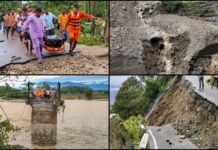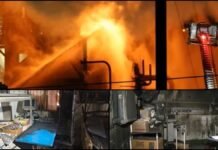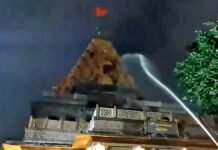
Key Points
- A Socata TBM 700 turboprop carrying four people crash‑landed at Kalispell City Airport around 2 pm and struck multiple parked aircraft, igniting a large fire but causing no serious injuries, authorities said.
- Two passengers sustained minor injuries treated on site; the pilot and all three passengers self‑evacuated before flames spread to nearby grass, which firefighters quickly knocked down with foam, officials noted.
- Preliminary probe indicates the pilot lost control during landing before the aircraft hit parked planes; the TBM 700 was built in 2011 and is registered to Meter Sky LLC of Pullman, Washington, records show.
- Witnesses reported a hard landing near the runway end followed by a collision and thick black smoke; the small city‑owned airport sits just south of Kalispell, population ~30,000.
- The NTSB and FAA are investigating; a recent separate US crash in Arizona involved a CSI Aviation medical flight near Chinle that killed four, underscoring broader safety scrutiny this week.
Kalispell( US): A single‑engine Socata TBM 700 attempted to land at Kalispell City Airport around 2 pm, crash‑landed on the runway, and then struck several parked aircraft, sparking fires on multiple planes and a grass blaze that was swiftly contained, according to Kalispell Police Chief Jordan Venezio and incident reports citing FAA information. Witnesses described the aircraft approaching from the south, touching down hard near the runway end, and careening into another aircraft as thick black smoke surged, footage and local accounts showed. Authorities said the incident prompted an immediate multi‑agency response on the airfield of the small, city‑owned airport just south of Kalispell in northwest Montana.
Injuries And Evacuation
Kalispell Fire Chief Jay Hagen said the landing aircraft caught fire but the pilot and three passengers got out on their own once it stopped, with two passengers suffering minor injuries treated at the airport before release, averting life‑threatening harm despite the dramatic blaze. Eyewitnesses and nearby business managers recounted a thunderous impact “like a bass drum hit as hard as possible,” followed by rapid smoke plumes, underscoring how quickly conditions deteriorated before responders deployed foam to subdue flames on the runway and adjacent grass. Officials added that several parked aircraft were affected by the fire, consistent with images of scorched tarmac and multiple ignition points near the impacted parking area.
Aircraft, Origin, And Early Findings
The FAA identified the airplane as a 2011‑built Socata TBM 700 registered to Meter Sky LLC of Pullman, Washington, and early investigative notes indicate the pilot lost control prior to striking parked aircraft during the landing sequence, triggering fires on multiple planes, authorities said. Aviation safety consultant Jeff Guzzetti noted that collisions between landing planes and parked aircraft occur sporadically each year in general aviation, highlighting the importance of stabilized approaches and runway discipline at smaller fields with mixed operations and ramp proximity. The National Transportation Safety Board will examine flight track data, maintenance records, pilot factors, and any tower/UNICOM communications as part of the standard accident protocol coordinated with FAA regional offices.
Fire Response And Containment
Kalispell fire crews, supported by surrounding departments, used foam to knock down the flames that spread from the impacted aircraft to nearby grass, containing the incident within minutes and limiting airfield damage to localized burn zones, officials reported. Images and video from the scene showed dark smoke columns and firefighting lines across the runway area until the fire was brought under control, allowing investigators to secure the site for safety checks and debris mapping required for the federal probe. Authorities said airport operations at the city‑owned field were stabilized following the response, with subsequent activity coordinated to ensure investigative access and safety.
Related US Crash In Arizona
The Montana incident follows a fatal crash days earlier on the Navajo Nation near Chinle, Arizona, where a Beechcraft King Air 300 medical transport operated by CSI Aviation crashed while preparing to pick up a patient, killing all four on board, prompting a separate NTSB investigation into weather, winds, runway characteristics, and aircraft condition. Victims in the Arizona crash have since been identified, as investigators recovered the cockpit voice recorder and continue analysis in Washington, D.C., with CSI Aviation confirming cooperation and mourning the loss of its two pilots and two medical crew members.
What’s Next
Federal investigators will produce a preliminary report for the Kalispell accident in the coming days, followed by a more detailed factual report and eventual probable cause, while the airport and aircraft owner coordinate recovery and insurance processes per standard post‑incident protocols. Officials emphasized that despite dramatic visuals and multiple aircraft fires, quick evacuation and firefighting kept injuries to a minimum, a point likely to inform safety takeaways for general aviation operations at small municipal airports.

















































